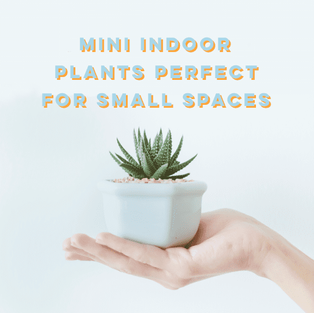Pilea Peperomioides became popular thanks to its relatively compact size, vibrant green leaves, ease of care and propagation. If you have a mini Pilea, you will need to make sure you know the basics of its care. This guide will help you learn what your plant needs to grow properly.
This article contains Amazon Affiliate links. The price of the products stays the same; we receive just a little bit in return. Earnings from qualifying sales will help us keep this blog up and running. Thank you so much for your support!
Soil
Your mini Pilea Peperomioides plant needs to grow in porous, well-draining soil.
Pilea is very sensitive to excessive moisture, and the best way to avoid moisture-related problems is to plant it into some all-purpose or tropical soil mixture. If you prefer, you can make your own mixture at home: use coco peat fiber or peat moss, and then mix it with a small portion of perlite (one part perlite to nine parts soil), which is great for soil aeration and drainage.
Make sure that you choose a planter or pot with drainage holes.
Water
Pilea can easily suffer from root rot – it's important not to keep the soil wet and let it dry out completely between each watering.
Check the soil of your mini Pilea to see if it's time for some water by sticking your finger in the first top inch of the soil. If it's dry, your Pilea is starting to get thirsty.
If you prefer, you can consider using a soil moisture gauge, a great tool for those who tend to overwater. It's inexpensive (it costs less than $20) and extremely easy to use. You just insert it directly into the soil, and the display will tell you whether it's dry, moist, or wet.
During the summer, you may need to water your Pilea Peperomioides plant a bit more to make up for the higher temperatures.
Humidity
Pilea loves humidity: if you are growing your Pilea Peperomioides in a room with a heater or air conditioner, spray the plant's leaves with a mister at least twice a week; this will help the plant's leaves retain enough moisture and avoid drying them out.
You can think about buying an indoor humidity monitor—it will help you manage moisture levels in the room.
Lighting
Pilea Peperomioides should never be placed in direct sunlight—it will scorch the leaves and cause the plant to dry out.
Pilea grows well in indirect bright light; in general, a spot facing a Northern or Eastern window will give the right amount of light.
Rotate your mini Pilea a few times a week if you want the plant to retain its symmetrical appearance, or the leaves will start growing towards the light.
If you only have a Western or Southern window, make sure to use blinds or sheers to protect the plant from excessive sun.
Temperature
Pilea requires moderate temperatures—between 60 and 80 degrees Fahrenheit.
It will suffer if exposed to temperatures below 55 degrees Fahrenheit or above 100 degrees Fahrenheit.
Place Pilea in an area where it won't be subject to any large temperature swings, such as drafty windows where it may be very hot in the afternoon and quite cool once the sun goes down.
Avoid placing the plant near any heaters or air conditioners, as temperature extremes could damage the plant in the long run.
Keep the plant far from any window fans or table fans, as the excessive air-flow can dry out the plant’s roots and cause issues.
Fertilizer
Pilea Peperomioides requires some fertilizer, especially if you want the plant to retain its vibrant color and continually grow healthy new leaves.
Feed your mini Pilea once a month using an all-purpose liquid fertilizer; dilute the mixture to half strength to avoid shocking the plant. For best results, look for a 20-20-20 ratio.
Slow down on fertilizing during the winter months—cut the doses in half or skip one session.
Other Care Essentials
Pilea Peperomioides is fairly low-maintenance, but you do need to practice some regular care if you want the plant to stay healthy and thriving.
Keep an eye out for any dead, yellow or brown leaves. These should be removed regularly to encourage new growth. You can prune the plant a few times a year, but don’t prune excessively as this can shock the plant.
Repot your plant every 1-2 years. When repotting, inspect the roots and current soil for any signs of root rot, mold or fungus growth, and pests. Carefully trim away tangled or circled roots.
Once a month, you should "flush" your Pilea Peperomioides. Water the plant 4 to 5 times in a single sitting while letting the water slowly drain out of the planter each time. Flushing helps wash away built-up salts and excess minerals in the soil.
You Might Also Be Interested In...







